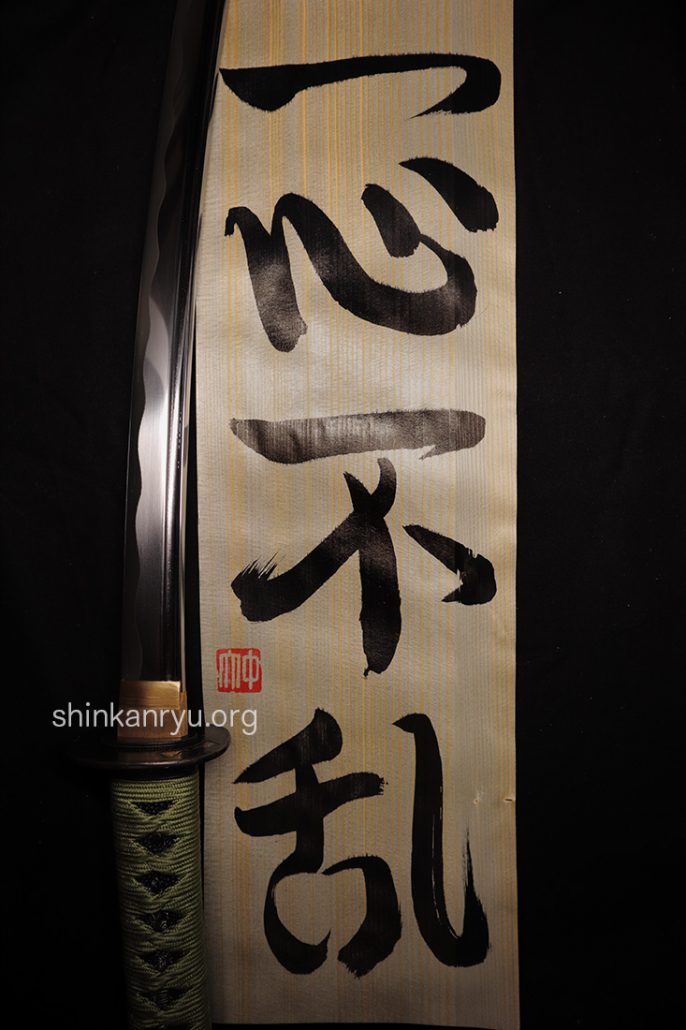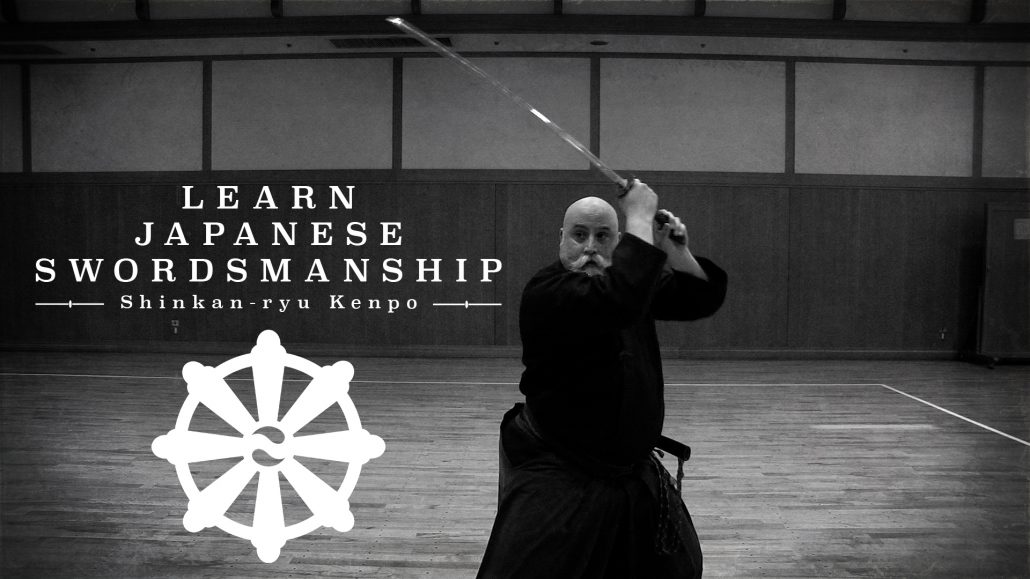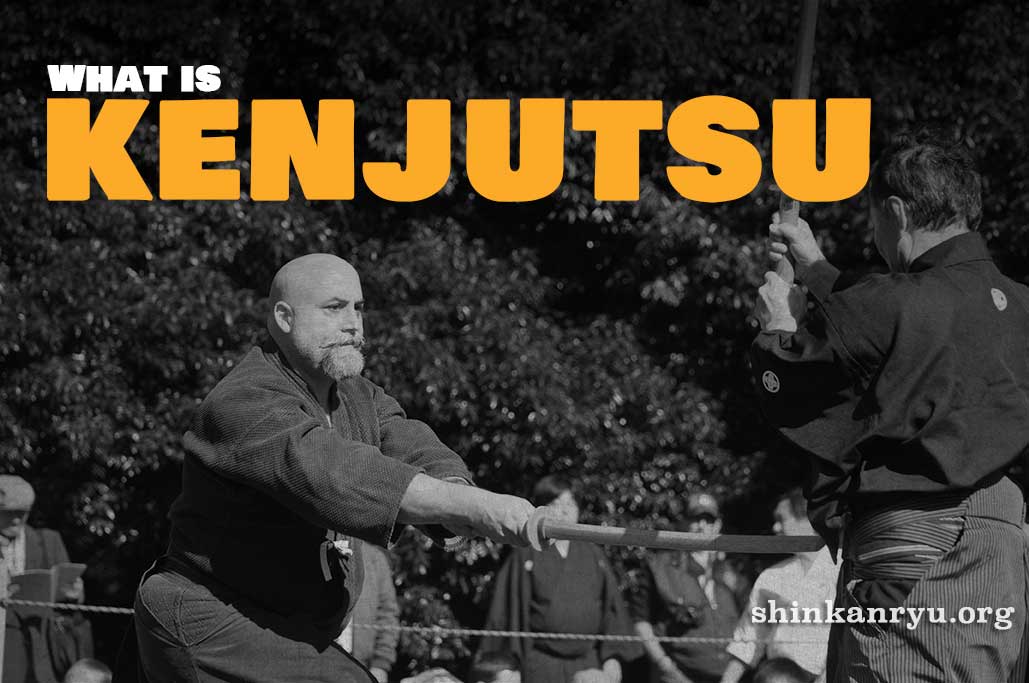Japanese martial arts are usually defined in two groups. Pre-modern and modern. There are no single agreed-upon criteria for the separation. Generally, schools that were founded before 1868 are referred to as koryū 古流 and arts after that, gendai budo 現代武道. The year 1868 is when the samurai as the ruling class was beginning to be abolished and the Meiji government was being established. Some point to the Hatorei, an edict passed in 1878 which restricted the wearing of swords and was one of many nails in the coffin for the samurai class.
In Japan, the terms koryū and kobujutsu 古武術 are used interchangeably. Some people distinguish between the two, however, it might be a semantical issue. I would rather not argue that. Linguistically koryu and kobjutsu are different though. Koryū can be translated and understood as old-flow or system. A style that has been transmitted from teacher to student often with some kind of menkyo kaiden certificate awarded. Kobujutsu simply means pre-modern martial arts.
A Stream

Ryū 流 (nagare) means to flow. In the classical martial arts of Japan, the flow is the information and techniques of the school from teacher to disciple. The character ryū 流 depicts the information or secrets (core inner thoughts) of someone in a river which carries this information to someone else. More precisely in bujutsu realm, the complete system was given to the someone with the certificate Menkyo Kaiden 免許皆伝 (complete transmission). This flow of information from one to another is what makes Koryū literally that which flows from what came before. Kobujutsu 古武術, however, just means old 古 martial arts 武術 that were founded before the Meiji restoration.
Self Defense & Techniques

The koryū and kobujutsu martial arts are not for modern self-defense, neither are they sports. The kobujutsu are traditions of fighting. While their goals might be combative in nature and focus less on personal development than say, modern kendo, they are not for street fighting, modern war, nor home defense. People often conflate martial arts and self-defense. It is my view that they are two distinct things. Towards the middle of the Edo period samurai and others that romanticized the past and the era of battlefield combat or became tired of the kata methods had turned towards the use of the shinai and shinai-bukuro for a safe means of sparring and 'testing' things out. This spread to competition between dojo. You can certainly imagine the ego's behind this form of competition.
There are many stories of schools (ryū-ha 流派) trying to dominate local areas through the use of these inter-school challenges. It was the late Edo period that saw a rise in the challenges of other schools. This was called Taryūjiai 他流試合 where swordsman of different ryū-ha could compete with each other to see who and who's style was the best. These were not always friendly and just for fun affairs. It is interesting to have inter-school bouts for educational purposes but anyone bragging that they still engage in such activities for anything other than private education between schools is a little immature and lacking in a contextual view of what Taryujiai actually was. In general, there are no competitions in Koryū as exists in modern kendo, judo, karate, or iaido.
Chūjō-ryū (14th C.), Nen-ryū (14th C.), Katori Shintō-ryū (15th C.) and Kage-ryū (15th C.) were founded during the trubulent war torn times of pre-modern Japan. Most schools branch out from this were created after fighting and major wars ceased. It was during the Edō period that many schools were founded and styles created. Older does not necessarily mean combat effective. The classical arts were not a unblemished cold blooded martial art. All of the arts have their issues and blemishes. It is dangerous to put a label of 'koryū' on anything and expect it to show its quality. The age of a martial art is not a good indication of its usefulness back in the day.
The Stream

The classical martial arts of Japan is a unique and interesting tradition of fighting methods and tactics from hundreds of years ago. Some schools that came later were considered watered-down variants but in today's view, they are also viewed as koryū. The purpose and application have really been lost in time no matter how serious the teachers and students in the last few hundred years. Although to use an example of kobujutsu or koryū kenjutsu schools the idea of being effective is paramount as compared to some modern iaidō schools. Techniques of the sword should be based on realistic principles of fighting with the katana.
If someone leaves a ryū and starts up their own school, even using the same techniques or modified slightly then purists will argue it is not koryū. Although in many koryū there have been significant changes, those changes were implemented by a menkyo kaiden. It is therefore still a legitimate koryū by many of the purist's ideas. It should also be noted that once you change things to a certain extent it loses its connection to the source or founder. Many schools in postmodern Japan emerged from other schools. There were hundreds of sword schools alone that branched off from such schools as Nen-ryū, Shinto-ryū, and Kage-ryū.
There are many koryū still extant in varying degrees of completeness from their origins in Japan today. Some schools have been lost due to untimely deaths of teachers, structural fires (accidental or intentional), or earthquakes and floods. Other schools have lost only part of their original techniques to such tragedies. Waza and tactics were often transmitted physically by person to person and not written down in great detail. This is orally transmitted teaching is known as kuden 口伝, transmission by mouth.
©2018 S.F.Radzikowski

ラジカスキー真照
館長Saneteru Radzikowski is the head sword instructor of Shinkan-ryū Kenpō. He lives and teaches Iaijutsu and Kenjutsu from Nara, Japan.
A Very Budo Christmas Happy Holidays & New Year
Happy Holidays and Happy New Year to all of you that were kind and supported...
You With Sword In Hand, Calm Yourself
The mental issues involved with subscribing to someone you dislike, hate, have anger towards, desire...
Katate Tsuki-One handed Thrust Iaijutsu
[fusion_builder_container hundred_percent="no" equal_height_columns="no" menu_anchor="" hide_on_mobile="small-visibility,medium-visibility,large-visibility" class="" id="" background_color="" background_image="" background_position="center center" background_repeat="no-repeat" fade="no" background_parallax="none" parallax_speed="0.3"...
Estás Involucrado en un Culto de Artes Marciales?
Recientemente tuve una conversación con alguien que se refirió a su escuela como una genuina...
How to learn kenjutsu?
How to learn kenjutsu? Learning anything as profound as a martial art needs a teacher....
Bujutsu Thoughts Issin-furan
[fusion_builder_container hundred_percent="no" hundred_percent_height="no" hundred_percent_height_scroll="no" hundred_percent_height_center_content="yes" equal_height_columns="no" menu_anchor="" hide_on_mobile="small-visibility,medium-visibility,large-visibility" status="published" publish_date="" class="" id="" background_color="" background_image="" background_position="center...
Learning Iaido Online: The Japanese Art of the Sword
Learning Iaido online is a wonderful challenge. Iaido or Iaijutsu can be deceptively simple in its...
Budo Thoughts: Practice is life.
Practice is life. Life is practice. Enjoy them together. Enjoying morning keiko outdoors. The smell...
What does Budō mean?
I’d like to discuss briefly discuss what Budo or Bujutsu means. I’m not a scholar...
What Is A Good Senpai In Budō?
I have discussed teachers and students within martial arts. The senpai-kohai relationship is just as...
Pain & Training In The Martial Arts
Pain & Training Pain is a universal dilemma. Especially for those in sports or martial...
death budo
What have you been distracting yourself with while death is around the corner? Time is...
Martial Arts Breathing
The spirit of the sword is the breath. Breathing Physiology What’s so crucial about martial...
Fear Isolation Martial Arts
Budo does not begin and end when you pass through the dojo, or step on...
The Old Is Not Distant
This is important to understand when practicing historical or classical martial arts. Although the sword...
正月 Bujutsu New Years 2019
To all of you that have supported and also those that have caused trouble to...
Iaido Tachi & Seiza Waza
Demonstrations of unique iaijutsu and complimentary techniques between standing and sitting.
I Am A Lazy Martial Artist
There is a saying, “You get out of it what you put into it.” It...
Honesty and the Martial Arts Hermit. Being a good budō teacher and student.
When people want to find a martial arts teacher, do they often think of mister...
Be Thankful.Be Earnest In Bujutsu & Life
Be thankful for your mistakes, failures, and blunders. They are your own teacher reminding you...
What is Kenjutsu? A guide to Japanese swordsmanship
Kenjutsu (剣術) is the Japanese art of the sword. It is one of the four...
6 Years of Shinkan-ryū Kenpō
Last week marked the 6th year of Shinkan-ryū Kenpō. I want to thank the faithful...
























